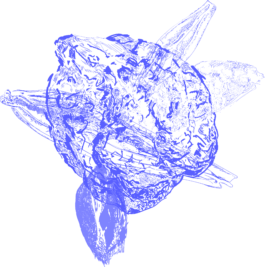barley
Family: Poaceae
Genus: Hordeum
Type species: Hordeum vulgare
Barley can have 2 rows of ears (spring variety) or 6 (winter variety). It is easily recognizable because its little barbs are almost all the same size. This cereal was widely consumed in ancient times and probably originated in the Middle East. Barley is well suited to Mediterranean climates, dry and non-fertile soils, but it also grows very well in high mountains, which makes it the cereal with the widest distribution because it is present in all regions.
In 2017, barley was ranked fourth among grains in quantity produced behind maize, rice and wheat. Russia was the largest producer of barley in the world in 2019 followed by France and Germany. (fig. 1)
A FAIRLY STABLE AGRICULTURAL MARKET
Previously, sales contracts were made for immediate realization or even for a few months between a producer and a processor, or a cooperative and a local or distant buyer. Farmers delivered their harvest in exchange for a definitive price, but with a deposit and price supplements once the sales were made. In the end, the fairly stable prices provided a fairly accurate view of the medium-term outlook.
THE DEREGULATION OF AGRICULTURAL MARKETS AND THE APPEARANCE OF "FUTURES MARKETS"
Since the 90's the states have abandoned the idea of regulating prices and trade. Under the injunction of the World Trade Organization, they have abandoned the tools (taxes strategic stocks) that allowed them to organize the production and marketing of the main agricultural commodities. At the end of the 1990s, "futures markets" were developed, a stock market type system on which it is possible to buy and sell commodities with a six-month or sometimes more than one year maturity. (fig. 2)
At the beginning, with a view to the free circulation of goods, these markets were intended to concern producers or storage organizations to facilitate them to market their goods. Very quickly, the physical exchange of goods became hypothetical: we sell wheat that we sometimes don't have and we buy wheat that we will never see.
FOOD SOVEREIGNTY?
Food, the main object of agricultural production, is not just any commodity on which to speculate, but an almost incompressible and immediate need of our societies. But financiers, traders and pension funds come to speculate on cocoa, coffee, cereals to capture virtual price increases that they themselves generate by their intervention.
The repercussions of these variations can be very damaging, especially when it comes to the major cereals whose price explosion can cause famines and revolts. The real actors must assume the consequences of this virtual economy. All the surplus value captured by finance is stolen from both the workers of the sectors but also from consumers. (fig. 3)
As soon as a country experiences a flood or a drought, even before the shortage exists, the system goes into overdrive, prices soar. It is true that climatic hazards are one of the characteristics of agricultural production, but contrary to what has been said, they are not always responsible for shortages. What creates instability is this liberal financial market model.
INDUSTRIAL AGRICULTURE VS. PEASANT AGRICULTURE
Some farmer-entrepreneurs decide what to grow not according to their fields or the needs of the local population but according to the market forecast and for export. Risky, because it takes a year between two cereal harvests.
Peasant agriculture works on a completely different scale. Local, with less heavy agricultural machinery in order to not damage and compact the land, they produce to feed the local population. (fig. 4)
THE RUSSIAN INVASION IN UKRAINE, SEVERE IMPACT ON THE GLOBAL ECONOMY AND IN COMMODITY MARKETS
The Russian invasion in Ukraine in late February 2022 shows how interdependent and connected countries are. Russia and Ukraine supply approximately a third of the wheat, over 70 percent of sunflower oil, 20 percent of corn, 26.6 percent of barley, and 11 percent of oil. Moreover, Russia is one of the world's most significant providers of fertilizers and related raw materials such as sulfur.
Ukraine is therefore one of the largest producers of grain in the world and can no longer export its products because the ports are blocked. (fig. 5)
Food is becoming a weapon. The world agricultural market has gone crazy, the price of wheat among other things has reached astronomical prices. Speculation, or the fact of making people believe that there is a lack of goods, is at the origin of most of the fluctuations observed. Agriculture, or rather a certain type of agricultural production, clearly shows its limits. (fig. 6)
The project Against the Grain attempts to address the issues surrounding agricultural production in all its diversity and complexity. (fig. 7)
Main sources for this page:
https://www.europenowjournal.org/2022/05/18/consequences-of-the-russian-invasion-of-ukraine-as-an-indicator-of-mena-dysfunctional-and-unequal-economic-and-food-system-production/
http://www.confederationpaysanne.fr/sites/1/cs/documents/CS_DOS_255.pdf
Against the Grain, 2022 -
In-situ installation, EKKM, Tallinn
Surface approx. 60 m2, 35 tons of topsoil
Field sown with twelve types of bread cereals from wheat, rye, oats, barley, lentil, chickpea, certified and farmer (heirloom) seeds from Estonia, Lithuania and France
Project by Gisèle Gonon
Graphic Design by Robin Siimann
Go to the next seed to get more infos :)
Grains and Ears of Barley, digital drawings, Gisèle Gonon, 2022
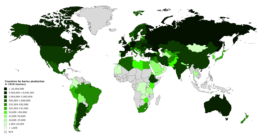
(fig. 1) Countries by barley production in 2016.
By JackintheBox - Own work, CC BY-SA 4.0, https://commons.wikimedia.org/w/index.php?curid=71552744
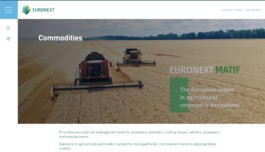
(fig. 2) Screenshot of Euronext’s website. Euronext is the main stock exchange in the euro zone
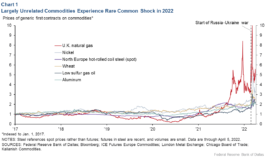
(fig. 3) Chart 1 Largely Unrelated Commodities Experience Rare Common Shock in 2022

(fig. 4) Example of a peasant agriculture farm. Visit of “La ferme sauvage” (The Wild Farm), Gisèle Gonon, France 2021
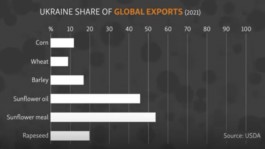
(fig. 5) Screenshot from @withukraine
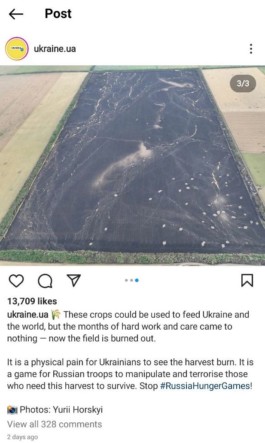
(fig. 6) Burned Grain fields, Ukraine, July 2022 Screenshot from @ukraine.ua
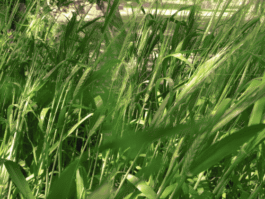
(fig. 7) Gisèle Gonon, Against the Grain, 2022 In-situ installation for the Museum of Contemporary Art EKKM in Estonia Fields sown with twelve types of bread cereals from Estonia, Lithuania, France. Detail, Barley, Ekkm July 2022
barley
Family: Poaceae
Genus: Hordeum
Type species: Hordeum vulgare
Barley can have 2 rows of ears (spring variety) or 6 (winter variety). It is easily recognizable because its little barbs are almost all the same size. This cereal was widely consumed in ancient times and probably originated in the Middle East. Barley is well suited to Mediterranean climates, dry and non-fertile soils, but it also grows very well in high mountains, which makes it the cereal with the widest distribution because it is present in all regions.
Grains and Ears of Barley, digital drawings, Gisèle Gonon, 2022
In 2017, barley was ranked fourth among grains in quantity produced behind maize, rice and wheat. Russia was the largest producer of barley in the world in 2019 followed by France and Germany.

Countries by barley production in 2016.
By JackintheBox - Own work, CC BY-SA 4.0, https://commons.wikimedia.org/w/index.php?curid=71552744
A FAIRLY STABLE AGRICULTURAL MARKET
Previously, sales contracts were made for immediate realization or even for a few months between a producer and a processor, or a cooperative and a local or distant buyer. Farmers delivered their harvest in exchange for a definitive price, but with a deposit and price supplements once the sales were made. In the end, the fairly stable prices provided a fairly accurate view of the medium-term outlook.
THE DEREGULATION OF AGRICULTURAL MARKETS AND THE APPEARANCE OF "FUTURES MARKETS"
Since the 90's the states have abandoned the idea of regulating prices and trade. Under the injunction of the World Trade Organization, they have abandoned the tools (taxes strategic stocks) that allowed them to organize the production and marketing of the main agricultural commodities. At the end of the 1990s, "futures markets" were developed, a stock market type system on which it is possible to buy and sell commodities with a six-month or sometimes more than one year maturity.

Screenshot of Euronext’s website. Euronext is the main stock exchange in the euro zone
At the beginning, with a view to the free circulation of goods, these markets were intended to concern producers or storage organizations to facilitate them to market their goods. Very quickly, the physical exchange of goods became hypothetical: we sell wheat that we sometimes don't have and we buy wheat that we will never see.
FOOD SOVEREIGNTY?
Food, the main object of agricultural production, is not just any commodity on which to speculate, but an almost incompressible and immediate need of our societies. But financiers, traders and pension funds come to speculate on cocoa, coffee, cereals to capture virtual price increases that they themselves generate by their intervention.
The repercussions of these variations can be very damaging, especially when it comes to the major cereals whose price explosion can cause famines and revolts. The real actors must assume the consequences of this virtual economy. All the surplus value captured by finance is stolen from both the workers of the sectors but also from consumers.

Chart 1 Largely Unrelated Commodities Experience Rare Common Shock in 2022
As soon as a country experiences a flood or a drought, even before the shortage exists, the system goes into overdrive, prices soar. It is true that climatic hazards are one of the characteristics of agricultural production, but contrary to what has been said, they are not always responsible for shortages. What creates instability is this liberal financial market model.
INDUSTRIAL AGRICULTURE VS. PEASANT AGRICULTURE
Some farmer-entrepreneurs decide what to grow not according to their fields or the needs of the local population but according to the market forecast and for export. Risky, because it takes a year between two cereal harvests.
Peasant agriculture works on a completely different scale. Local, with less heavy agricultural machinery in order to not damage and compact the land, they produce to feed the local populatio

Example of a peasant agriculture farm. Visit of “La ferme sauvage” (The Wild Farm), Gisèle Gonon, France 2021
THE RUSSIAN INVASION IN UKRAINE, SEVERE IMPACT ON THE GLOBAL ECONOMY AND IN COMMODITY MARKETS
The Russian invasion in Ukraine in late February 2022 shows how interdependent and connected countries are. Russia and Ukraine supply approximately a third of the wheat, over 70 percent of sunflower oil, 20 percent of corn, 26.6 percent of barley, and 11 percent of oil. Moreover, Russia is one of the world's most significant providers of fertilizers and related raw materials such as sulfur.
Ukraine is therefore one of the largest producers of grain in the world and can no longer export its products because the ports are blocked.

Screenshot from @withukraine
Food is becoming a weapon. The world agricultural market has gone crazy, the price of wheat among other things has reached astronomical prices. Speculation, or the fact of making people believe that there is a lack of goods, is at the origin of most of the fluctuations observed. Agriculture, or rather a certain type of agricultural production, clearly shows its limits.

Burned Grain fields, Ukraine, July 2022 Screenshot from @ukraine.ua
The project Against the Grain attempts to address the issues surrounding agricultural production in all its diversity and complexity.

Gisèle Gonon, Against the Grain, 2022 In-situ installation for the Museum of Contemporary Art EKKM in Estonia Fields sown with twelve types of bread cereals from Estonia, Lithuania, France. Detail, Barley, Ekkm July 2022
Against the Grain, 2022 -
In-situ installation, EKKM, Tallinn
Surface approx. 60 m2, 35 tons of topsoil
Field sown with twelve types of bread cereals from wheat, rye, oats, barley, lentil, chickpea, certified and farmer (heirloom) seeds from Estonia, Lithuania and France
Project by Gisèle Gonon
Graphic Design by Robin Siimann
Go to the next seed and scan the corresponding code to get more infos :)
